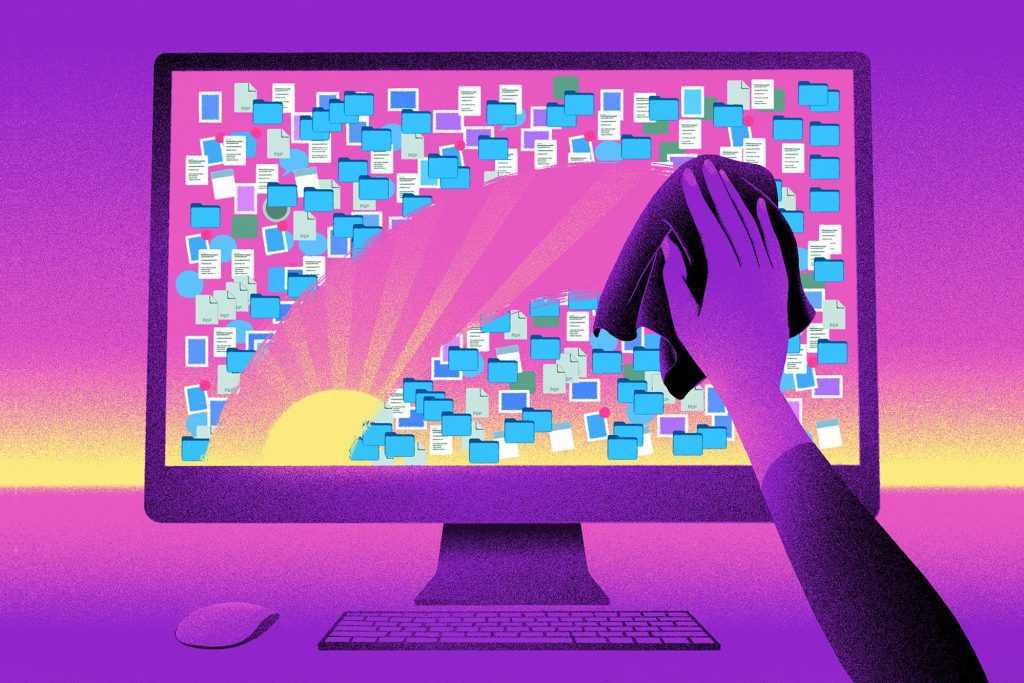How to Declutter Your Digital Life? Checklist – Technologist
The digital life with ever-evolving trends has impacted our lives on a broader level. There are multiple tasks every time that need to be fulfilled as soon. Such an influence clutters our lives with overwhelming information, files, apps, and notifications from the Internet or remote work. This clutter may contribute to stress, decreased productivity, and overall confusion in ourselves from the beginning. As harmony and efficiency are necessary to organize the physical spaces, similarly it is highly important to declutter and organize the the digital environment.
In this article, we will tell you about decluttering your digital life and improving your work efficiency.
Meaning of Decluttering Your Digital Life
Decluttering your digital life refers to organizing, streamlining, and simplifying the vast array of digital content, files, applications, and information. This information may be accumulated across various devices and platforms. Further, this practice involves systematically managing digital assets to reduce clutter, optimize efficiency, and enhance productivity in the digital realm.
Why Declutter Your Digital Life?
Individuals or professionals who want to live their lives simply need to declutter their digital lives. Moreover, decluttering your digital life is also essential for several compelling reasons in today’s fast paced world. Here are some crucial motivations behind decluttering your digital space:
Enhanced Productivity and Focus
First of all, digital noise which may embrace excessive notifications, unused applications, and files create increased mess and may distract. In this vein, based on the overall structure of one’s online environment, that is, how clean or cluttered it is, one is likely to pay better attention to what is supposed to be done, and have a clearer state of mind. Moreover, in doing so you will be able to achieve your goals in terms of productivity and work efficiency as well as for the balance between work and life.
Improved Efficiency and Accessibility
Organizing files, folders, and emails streamlines access to important information. When your digital space is well-structured, finding what you need becomes faster and easier. In addition, this efficiency reduces the time spent searching for documents or navigating through cluttered interfaces.
Optimal Device Performance
Cluttered devices tend to operate slower due to the accumulation of unnecessary files and applications. Moreover, decluttering frees up storage space, allowing your devices to run more efficiently and maintain optimal performance.
Better Digital Security
Digital clutter often includes outdated software, unused accounts, and neglected security measures. Further, decluttering involves reviewing security settings, updating software, and revoking access to unnecessary accounts, thereby enhancing your overall digital security.
Reduced Stress and Overwhelm
Clutter in the digital space disrupts the order in the mind and hence, creates anxiety. Overwhelming might be caused by endless notifications, a chaotic list of emails in the inbox or an untidy working space. These amendments enhance the structural organization of space and help people achieve a sense of order and relaxation through technology.
Enhanced Digital Privacy
Unused accounts, stored personal data, and redundant applications pose privacy risks. By decluttering and deleting unnecessary accounts and data, you minimize your digital footprint. This reduces the chances of a privacy breach or identity theft.
Tactics to Declutter Your Digital Life
You need to know how to declutter your digital life for a better lifestyle and create a work-life balance. Here, you will get to know some of the best tactics to declutter your digital life:

Assess Your Digital Footprint
Firstly, start by taking stock of all your digital assets: files, documents, emails, photos, apps, and accounts. Identify what’s essential and what’s redundant or obsolete for your work life. You need to evaluate which platforms and services you actively use and which ones you can do without.
Tackle Email Overload
You should implement an efficient email management system to manage your emails. Unsubscribe from unnecessary newsletters and promotional emails. Organize your inbox using folders, labels, or filters to sort and prioritize emails. Furthermore, consider using productivity tools or apps that help manage emails effectively.
Organize Files and Folders
When dealing with digital documents, you need to come up with an efficient administrative plan. Files must be organized into folder structures with easily identifiable names, and documents, photographs, and other similar files have to be grouped together and labeled accordingly. Clear out your drives and remove duplicate files, files that are no longer required, and other unnecessary documents and files. Web applications such as Google Drive, Dropbox or iCloud can be very useful to store and sort files online.
Clear Desktop and Downloads
Your computer desktop and downloads folder can easily become a digital dumping ground. Organize your desktop by creating folders for different file types and moving relevant items into them. Clear out the downloads folder regularly to avoid accumulating unnecessary files.
Simplify Digital Photos and Videos
Review and organize your photo and video libraries. Delete blurry, duplicate, or unimportant photos. Consider using photo management tools that help categorize and tag images for easy retrieval. Backup your precious memories on external drives or cloud storage.
Streamline Apps and Software
Evaluate the apps and software on your devices. Uninstall or delete applications you no longer use or need. Organize apps into folders or categories on your devices’ home screens for easy access. Regularly update software to ensure security and performance enhancements.
Secure Digital Security and Passwords
Strengthen passwords and set two-factor authentication where necessary in an effort to increase digital security. Utilize the password managers with a view of storing the passwords and generating complicated and distinct passwords for the different accounts. Regularly monitor all the third-party apps connected to your account and delete those you don’t use or don’t fully trust.
Manage Digital Subscriptions
Review your digital subscriptions for services, streaming platforms, or memberships. Cancel subscriptions that you no longer need or use. Consider consolidating similar services to minimize costs and simplify billing.
Establish Digital Boundaries
Set boundaries for your digital habits. Designate specific times for checking emails and social media to avoid constant distractions. Use features like “Do Not Disturb” or app limits to regulate screen time and focus on more meaningful activities.
Regular Maintenance and Review
Schedule regular intervals to revisit and maintain your decluttered digital space. Set aside time weekly or monthly to organize files, review subscriptions, and ensure your digital environment remains clutter-free.
Final Verdict
Conclusively, de-clustering is more of a continuous process that needs constant intervention with particular attention and focus. This checklist and the additional mindful actions will help you design an organized and integrated digital environment. This means that productivity will improve, there will be little stress to worry about, and users will have a better experience when using the internet. In this case, it will reach its best level since you will have the highest likelihood of increasing the over all efficiency.



